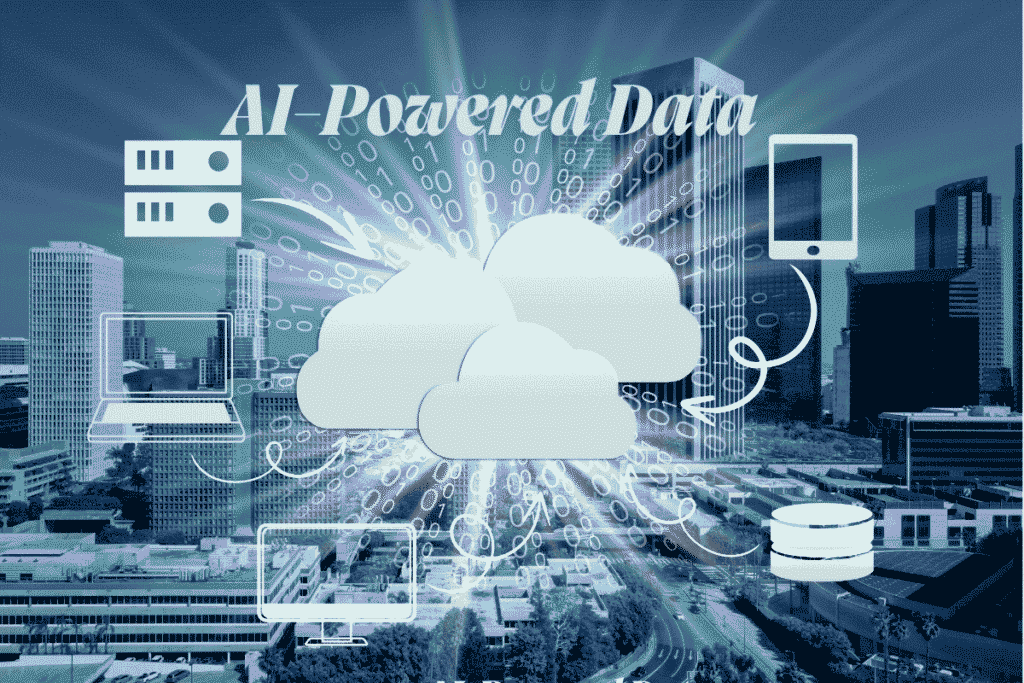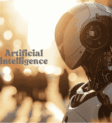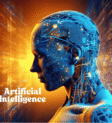Hello people! How is artificial intelligence affecting both big data and cloud computing? AI is transforming the way companies organize and use huge sets of data together with cloud systems to work more efficiently, scale their services, and come up with new ideas. AI together with big data and cloud computing allows companies to make sense of their information, save resources by being more efficient, and provide advanced services to many users.
This article investigates how AI is reshaping these industries, describes its applications, benefits, drawbacks and where it is headed in the future and shows how industries around the world have been changed by it.
Let’s dive in!
Table of Contents
AI, Big Data Union
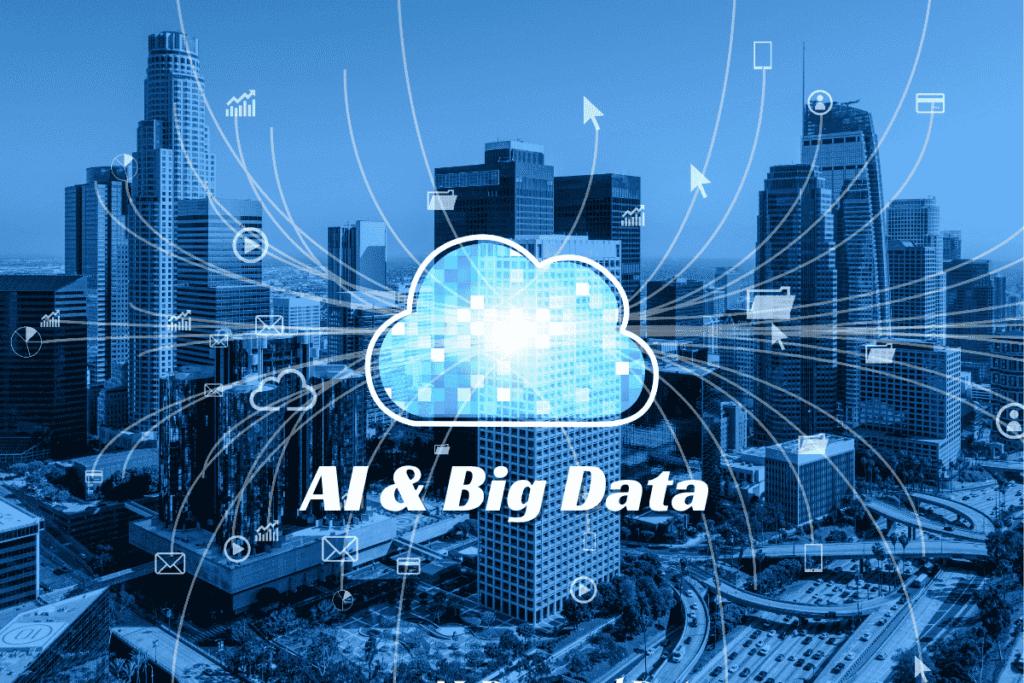
In the digital era, the arrival of big data and cloud computing made it possible for organizations to save, work with, and examine huge amounts of data. Big data means dealing with very large or complex information that cannot be managed by normal tools because it has the 5Vs: volume, velocity, variety, veracity, and value. Cloud solutions make it possible to easily increase or reduce the infrastructure needed for handling the data. Since AI learns, reasons, and anticipates, it makes both events and tools work better together.
The blending of AI, big data and cloud computing is very beneficial. With big data supplying vast amounts of data, AI is better able to function and with cloud systems, AI is more easily trained and put into use. The IDC found in 2024 that 80% of enterprises combining AI, big data and cloud computing saw their operational efficiency increase by 40%. Because of this convergence, there is greater innovation in healthcare, finance and retail.
Big Data Driven by AI
Handling and Sorting Data
Big data is often messy and not organized which makes it necessary to perform lots of cleaning tasks before anything else. By making data cleaning, normalization, and transformation automatic, AI speeds up the process. Machine learning (ML) software spots unique cases, replaces missing values, and adjusts the format of information. An example is Apache Spark, combined with AI libraries, which can process huge amounts of data, finding any inconsistencies as they happen.
NLP is used to improve text-based data by understanding the meaning in unstructured formats such as what customers write on social media. A report by Gartner in 2025 indicated that using AI to clean data decreased cleaning efforts by half which allowed analytics to proceed much faster.
Analytics and Data Insights
Raw data is converted into insights that can be acted on by AI. Through using machine learning, predictive analytics predicts future activities. In retail, AI uses information on what has been sold to predict demand which improves how we manage stock. Using deep learning models, it is now possible to detect fraud in financial transactions with an accuracy as high as 95%, reports a 2024 IEEE study.
Using AI helps companies to do real-time analysis. Services like Apache Kafka allow companies to stream live data from IoT and social media and with AI, results are available right away. For self-driving vehicles, this capability is very essential since it needs fast processing of on-the-spot data in a blink of an eye.
Data Visualization Insight
AI increases the usefulness of data analysis by building dashboards that you can interact with and see updates instantly. By applying AI, Tableau and Power BI recommend suitable visualizations that help lower-tech users access the findings in the data. An AI might propose showing geospatial data with a heat map or displaying time-series data using a trend line.
With NLP-assisted chatbots and data platforms, users can request and see their dataset information even if they use natural language. If you ask about last quarter’s sales, you get fast and simple-to-understand charts to share with others.
Anomaly Detection and Security
Both anomalies and cyber danger are common in big data environments. AI can find out quickly if there are unusual patterns such as attempted fraud in a financial transaction or an attempt to penetrate the system. The use of ML allows systems to spot any problem in actual data as soon as it occurs. It was recorded in a 2025 Cybersecurity Report that by relying on AI for finding unusual cases, false positives were dropped by 60%, resulting in better security efficiency.
AI improves the management of data governance. AI-powered solutions, for example Collibra, automatically sort sensitive information to satisfy GDPR or CCPA. Since organizations deal with increasing amounts of customer and company information, it is very important.
AI In Cloud Computing
Scaling with the Community
Optimizing use of resources is made possible through AI by AWS, Azure and Google Cloud. Machine learning is used to estimate the necessary resources, so the computing and storage capacity adjusts as required. AWS has developed Auto Scaling with AI and this allows servers to be configured automatically for cost savings of about 30% as reported by Forrester in 2024.
Maintenance systems that use AI help protect the reliability of cloud infrastructures. Analyzing logs and performance of the system, AI predicts potential issues, helps solve them easily, and keeps downtime to a minimum. Google Cloud uses AI to spot potential failures in hardware with high accuracy, about 90%.
Security and Compliance
Sophisticated cyber attacks are a big concern for cloud environments. AI is able to find and address security threats instantly. Using ML, Microsoft Azure Sentinel carefully studies network activity and finds possible DDoS attacks. It was found in a Ponemon Institute study of 2025 that better cloud security because of AI decreased the amount of time needed to detect breaches by about 40%.
Compliance can now be handled by AI. AI monitors data access and how it is used which helps ensure compliance with regulations and creates audit trails automatically. Making this a priority is important for healthcare because HIPAA compliance is required by law.
AI-as-a-Service (AIaaS)
AI-as-a-Service on the cloud gives everyone the ability to access AI. AWS SageMaker, Google Cloud AI Platform and Azure Machine Learning make it possible for organizations to use AI without needing to develop all the required expertise. With Google’s Vision AI, a small company can look at customer photos without having to make its model.
Access to advanced analytics becomes easier for startups and non-technical people through AIaaS. According to a 2024 Statista report, 65% of users who use the cloud rely on AIaaS for tools like sentiment analysis or predictive modeling.
Serverless AI Integration
AI works well with serverless architectures including AWS Lambda and Azure Functions. AI improves how functions are executed by estimating how often they will be called and makes things run faster and cost less. An AI-based application without servers might be able to handle uploaded images instantly, while scaling itself when required.
Serverless development can be made better with the help of AI. For example, AWS CodeGuru uses AI to review serverless code and makes the code more efficient and less error-prone. This simplifies the creation of applications for working in the cloud.
Power of AI, Big Data & Cloud

Scalable Data Processing
Big data is processed by cloud resources and AI increases the efficiency of those processes. For instance, Google BigQuery that is powered by AI can deal with terabytes of data in just seconds and offers] instant analytics for major organizations everywhere. Because of the scalability, applications such as marketing campaigns and genomic studies are possible.
Cost Efficiency
AI ensures that cloud resources are used efficiently which cuts costs. Because much of the work is done automatically, companies require less labor and less infrastructure. In 2025, a Deloitte report stated that using AI in cloud systems lets data-intensive businesses save 25% on operations.
Accelerated Innovation
Making prototypes and offering new services to users can be done rapidly because of AI, big data and cloud computing. Startups have the option to use cloud-based AI tools to construct data-driven apps, not having to invest a lot from the beginning. Firms can unveil chatbots powered by AI in weeks instead of wasting months on development.
Enhanced Decision-Making
AI is able to process big data and find useable results by using large, flexible cloud resources. With this, organizations can rely on data to improve their supply chains and improve individual experiences for customers. Netflix on AWS processes viewer preferences with machine learning which powers 80% of its content recommendations.
AI Challenges in Big Data & Cloud
Data Privacy and Security
Big data often has sensitive content and using the cloud can cause more privacy issues. If an AI tool handles a dataset that contains personal info, it could accidentally disclose the data if the AI tool isn’t secure. You need strong encryption and limited access to comply with GDPR. An IBM report from 2025 found that 60% of companies face problems securing AI-powered cloud services.
Bias in AI Models
Models that use biased big data might present answers that are also biased, affecting how you use analytics and make decisions. If the information about customers is biased, then the marketing campaigns might be unfairly targeted. For datasets to avoid bias, it is important to always have diverse and representative information and this must be regularly checked and made clear.
Integration Complexity
Combining AI, big data, and cloud tools can be challenging, mainly for systems used in the past. If your data or cloud platform is not compatible or too old, refactoring a lot of code may be needed. Because smaller companies often struggle with resources, they may not be able to roll out AI as much as bigger firms.
Computational Costs
Due to the large size of the data, processing AI models takes up a lot of computing power which can raise cloud usage fees. An example is that training a deep learning model with a petabyte-scale dataset might involve paying thousands of dollars for necessary cloud resources. Making models more efficient and taking advantage of server less architectures are two actions that ease this difficulty.
AI in Cloud Analytics
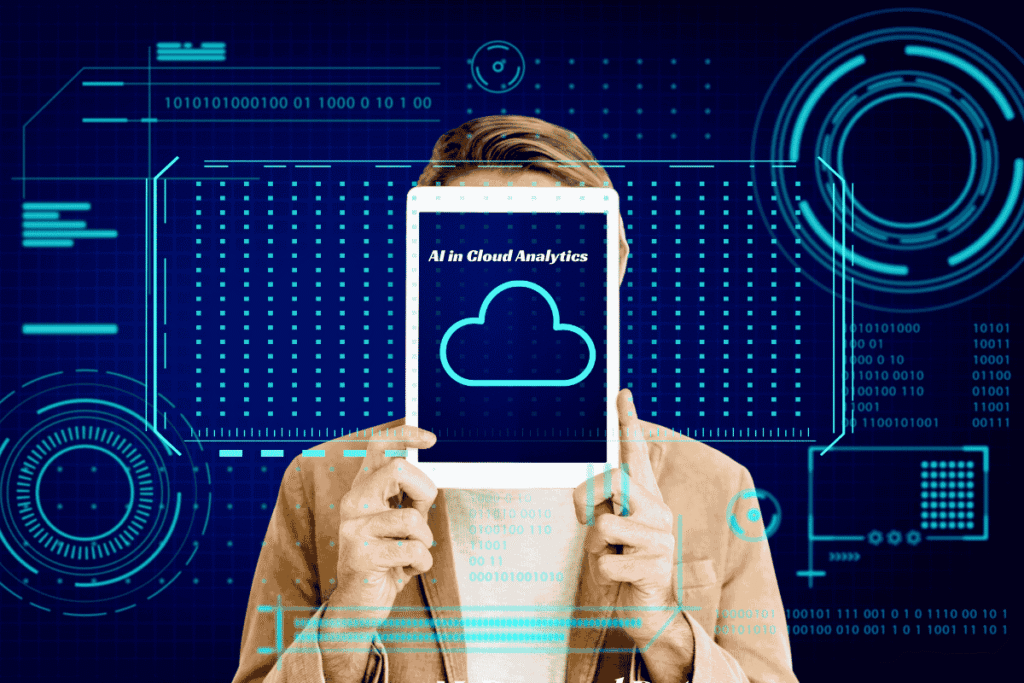
The effect of AI in big data and cloud computing is constantly improving. Generative AI makes it possible to create advanced pipelines which automate everything from bringing in data to making it visual. A chainstore might use AI to organize its data, recognize how many products to buy and prepare reports all by itself.
Combining edge computing, AI and cloud technologies will provide IoT devices with fast processing of incoming information. But automobiles driven by AI will use edge computing to examine their own sensor readings and then transfer data to the cloud servers for more thorough analysis. A McKinsey forecast from 2025 shows edge AI will expand by 50% every year through 2030.
Conclusion
Due to Artificial Intelligence, big data and cloud computing are now helping organizations deal with massive amounts of data, use resources effectively, and boost innovation. AI boosts efficacy and improves decision processes in many different industries through predictive analytics and automated security.
Even so, problems related to privacy, bias, and integration must be fixed for AI to truly develop. With the growth of businesses will have access to more productive and scalable data and cloud services. What impact will AI have on the data strategy for your organization?
FAQS
- In what ways does AI make big data analytics better?
AI handles data processing mechanically, spots patterns, and guesses future developments.
- Is it possible for AI to help make cloud computing run more efficiently?
AI makes use of resources more efficiently, expands the business more smoothl,y and cuts back on regular expenses.
- How might AI create challenges in big data?
There are major threats in the form of bias, privacy and the challenge of integrating AI into human society.
- What ways does AI play a part in keeping clouds secure?
AI can detect risks, handle complaints, and decrease the time needed to find a breach.
- What changes will AI introduce to future cloud computing?
AI will be used to manage work processes, boost technology at the edge, and power innovations.
